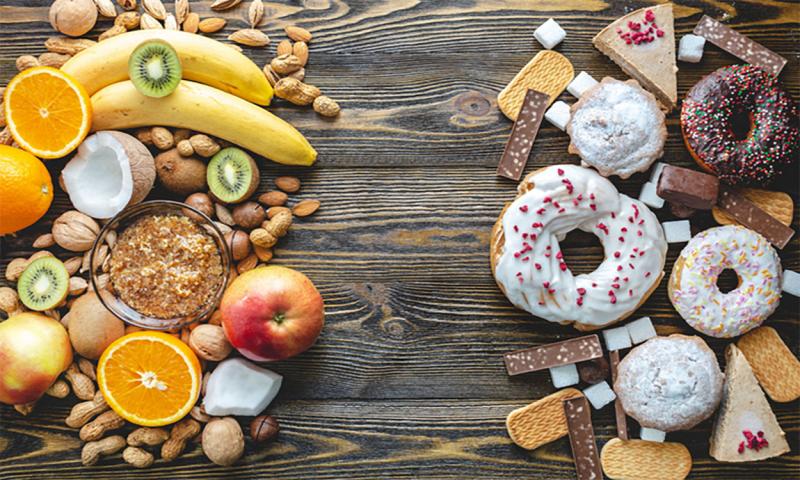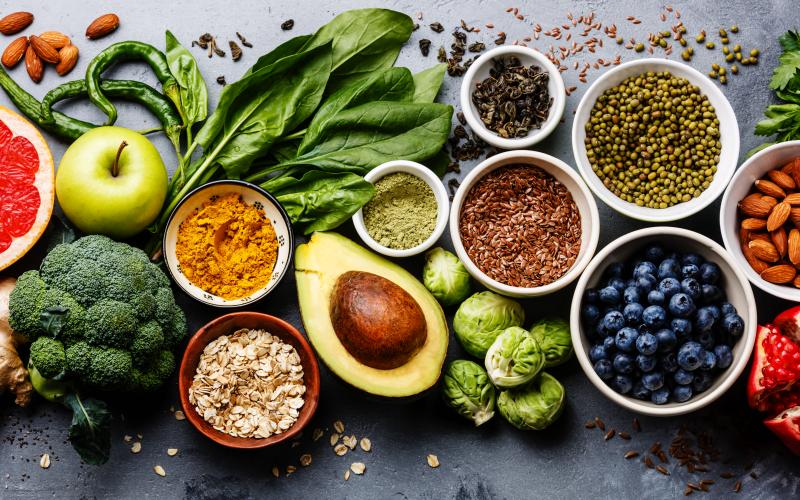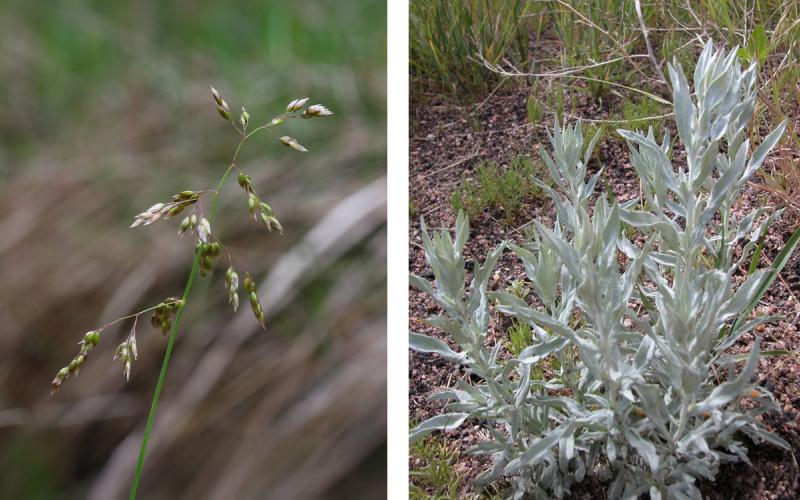Written by Anna Tvedt, former SDSU Extension Nutrition Field Specialist.
We’ve all seen it, experienced it, or heard of it: the sugar rush and crash. It can happen to both youth and adults. But what is going on in our bodies to cause this? And can we avoid it?
How Our Bodies Respond to Sugar

When we eat foods with carbohydrates, our bodies respond by breaking them down into a sugar called glucose that is absorbed into our blood stream. This causes a rise in our blood glucose levels (also known as "blood sugar"), which signals the pancreas to release insulin. Insulin promotes glucose uptake by cells in our body (for example, muscles) to use for energy. And, in turn, it brings blood glucose levels back to a normal range within a few hours of eating. Blood glucose levels rise and fall to a greater or lesser extent based on what we eat and drink. While we may be able to feel the effects of eating a lot of sugar, the symptoms are mild and not dangerous for healthy people without diabetes.
Blood Sugar and Diabetes: You may have heard the terms “blood sugar” and “insulin” when talking about diabetes. That is because blood sugar regulation does not occur properly in people with diabetes. Many habits recommended to people with diabetes can be used by all people to avoid sugar rushes and crashes.
Foods That Cause Sugar Rushes and Crashes
When you think of a sugar rush, what foods come to mind? You may think of pop, candy, or desserts. My mind reminds me of a time I made s’mores for two children whose mother I was staying with for a program in Guatemala. It was the Fourth of July, and I thought it would be a fun way to share a piece of American culture. Not long after eating the s’mores, the kids were (literally) running in circles on the living room furniture. Maybe not my best idea after all!

Not all carbohydrates provide the same sugar rush effects, because not all carbohydrates are created equally. While all carbohydrates have sugar, some break down more quickly than others. For example, sweet drinks, desserts, starchy foods, and refined grains will break down quickly and cause a rapid release of sugar into the bloodstream. Refined grains are grains such as white bread or enriched pasta that are not whole, because the fibrous and protein portions have been removed, leaving primarily the starchy portion. Fruits, vegetables, and whole grains with naturally occurring sugars will break down more slowly due to complex fiber bonds that are harder to break. The slower breakdown results in a steady release of sugar into the blood stream rather than a rush.
How to Spot a Sugar Rush & Crash
When foods or drinks with added or refined sugars are consumed, the rise in blood sugar happens quickly. We may feel a burst of energy as a sugar rush. The rise in blood sugar is matched by an equally strong release of insulin. This insulin pulls sugar into cells and out of the blood stream, resulting in a drop in blood sugar. We may feel a drop in energy, hunger, shakiness, irritability, weakness, headache, or difficulty focusing.
Strategies to Avoid Sugar Rushes and Crashes

- Pair with protein. One of the best ways to manage your blood sugar is to eat a balanced diet composed of all three macronutrients: protein, carbohydrates, and fat. Fat and protein help moderate glucose release into the bloodstream. Protein is three times more effective than fat at moderating blood sugar when paired with carbohydrates, so focus on pairing a protein food with an added-sugar or refined carbohydrate to prevent the sugar rush and crash. For example,
- Have dessert with or directly after a protein-rich meal.
- Combine carbohydrate snacks and treats with nuts, cheese, milk, nut butter, or snack meats.
- Choose whole grains. Whole grains include more fiber and protein than their refined counterparts. Choose the whole grain option for a slower glucose release.
- Choose whole fruit. Whole fruit can often satisfy the same flavor craving as fruit-flavored snacks or juices. Choosing whole fruit provides fiber to slow glucose release.
- Eat consistently. Spreading carbohydrate choices evenly throughout the day helps to prevent spikes and dips in blood sugar. Skipping meals can make you more hungry and more likely to overindulge in sugary foods later. Keep on top of your hunger by eating a meal or snack about every four hours.
- Take a walk after eating. Movement facilitates muscle uptake of glucose.
Conclusion
Foods and drinks with added sugars or refined carbohydrates can be a fun, tasty, and a cherished part of celebrations. It’s okay to enjoy them, but we may like to avoid the way they make us feel. Avoid the sugar rush and crash by pairing these foods with protein, spacing sugar intake into small amounts throughout the day, or taking a walk after eating.
Sources
- Byrd-Bredbenner, C., Berning, J. R., Moe, D. S., Abbot, G., & Beshgetoor, D. (2014). Wardlaw’s perspectives in nutrition: A functional approach. McGraw Hill.
- Kim, J. S., Nam, K., & Chung, S.-J. (2019). Effect of nutrient composition in a mixed meal on the postprandial glycemic response in healthy people: A preliminary study. Nutrition Research and Practice, 13(2), 126.
- Moghaddam, E., Vogt, J. A., & Wolever, T. M. (2006). The effects of fat and protein on glycemic responses in nondiabetic humans vary with waist circumference, fasting plasma insulin, and dietary fiber intake. The Journal of Nutrition, 136(10), 2506–2511.
- Manzella , D. (2023, March 22). How the glycemic index chart can help manage blood sugar. Verywell Health.


